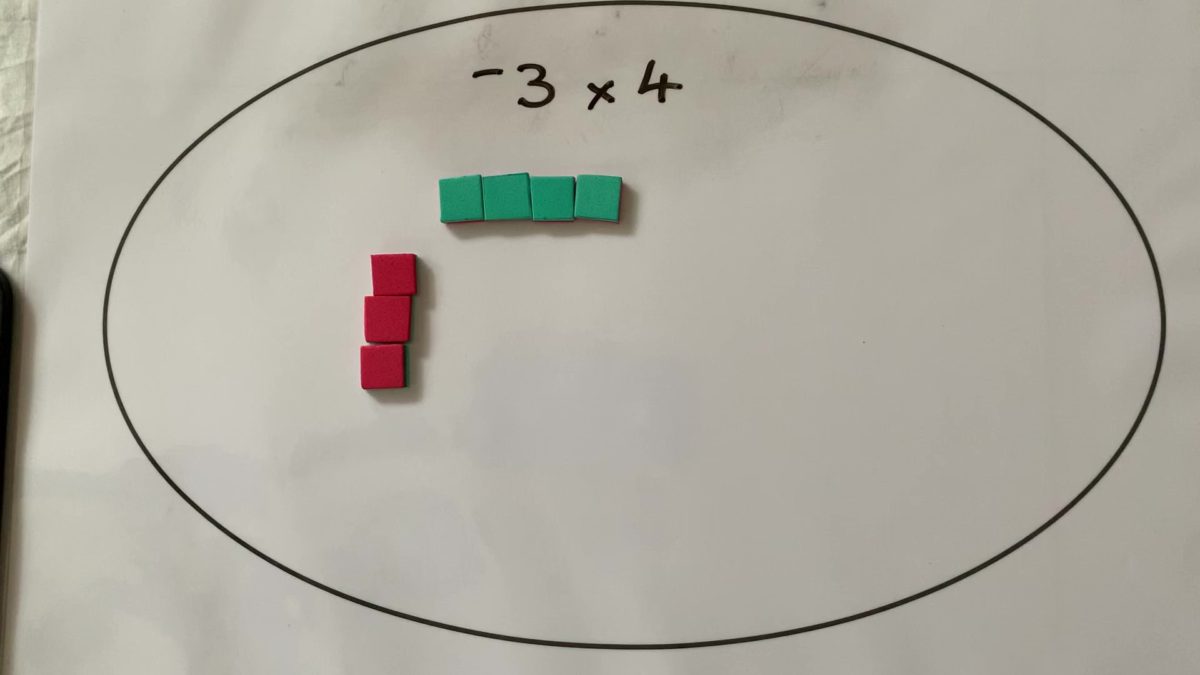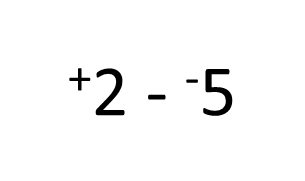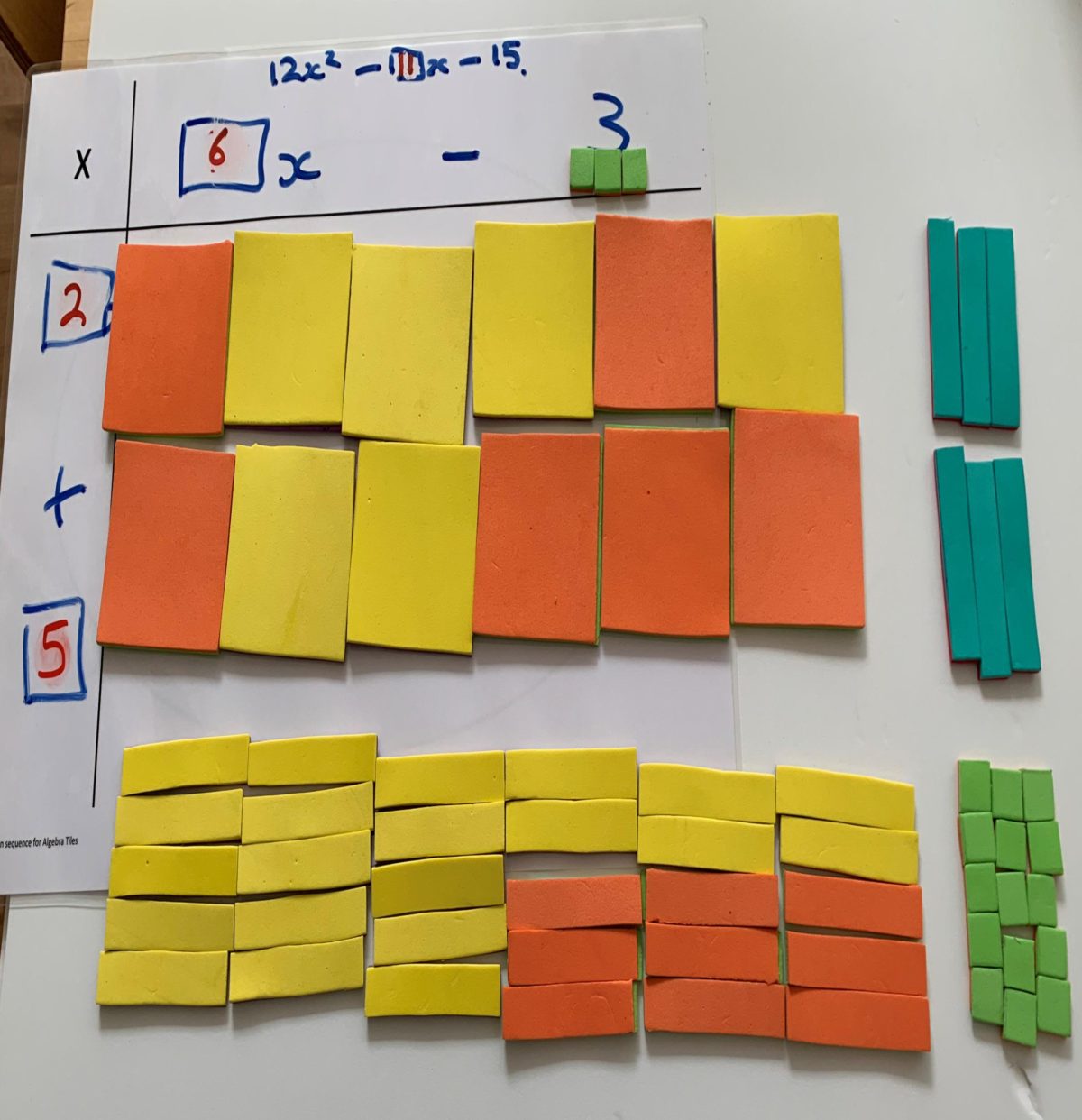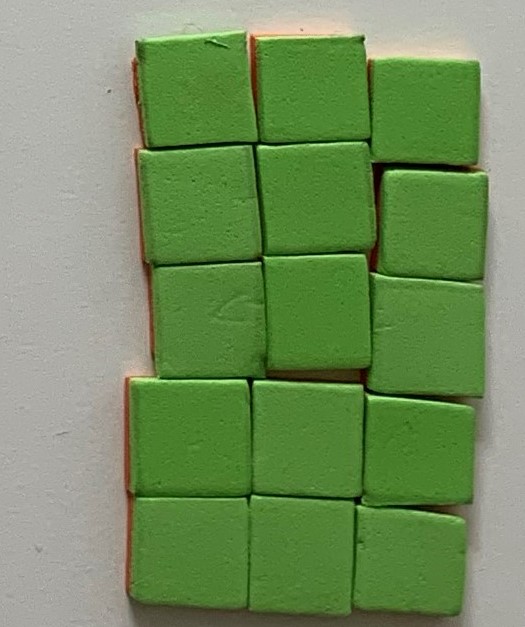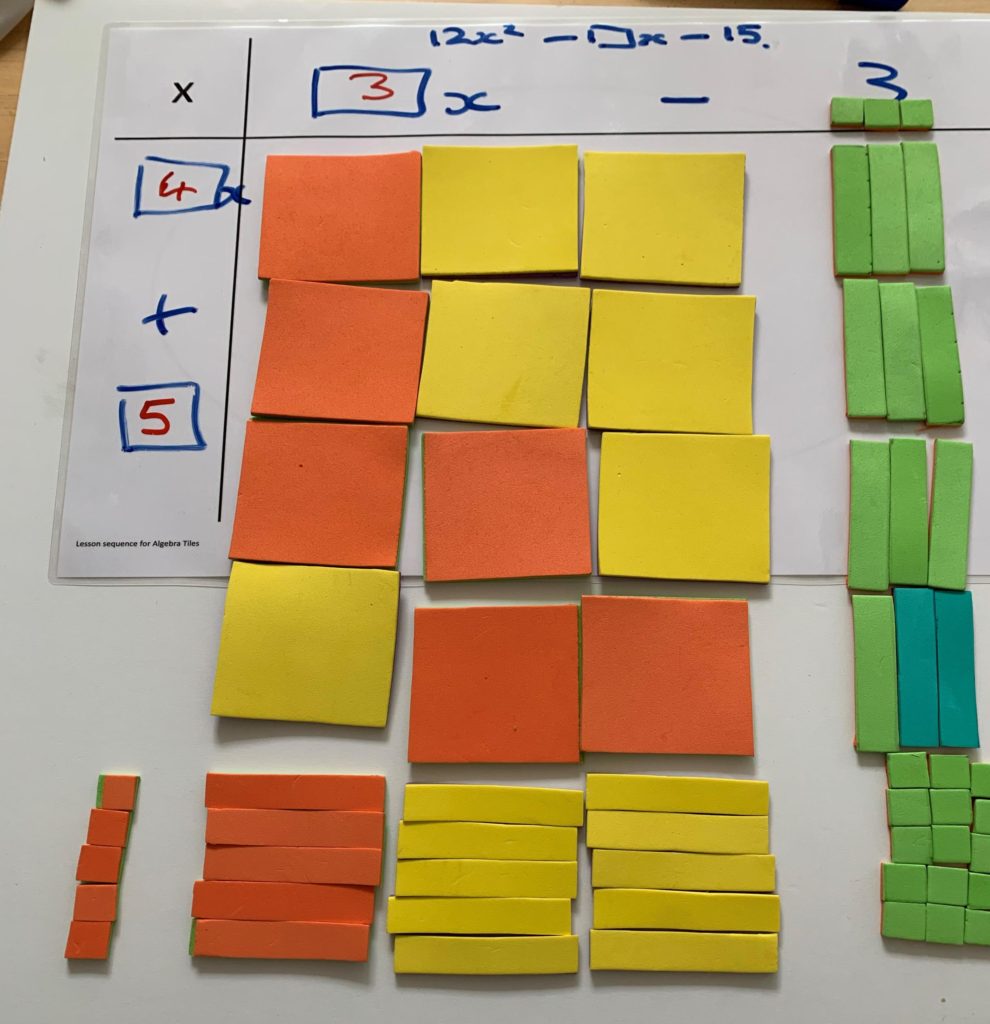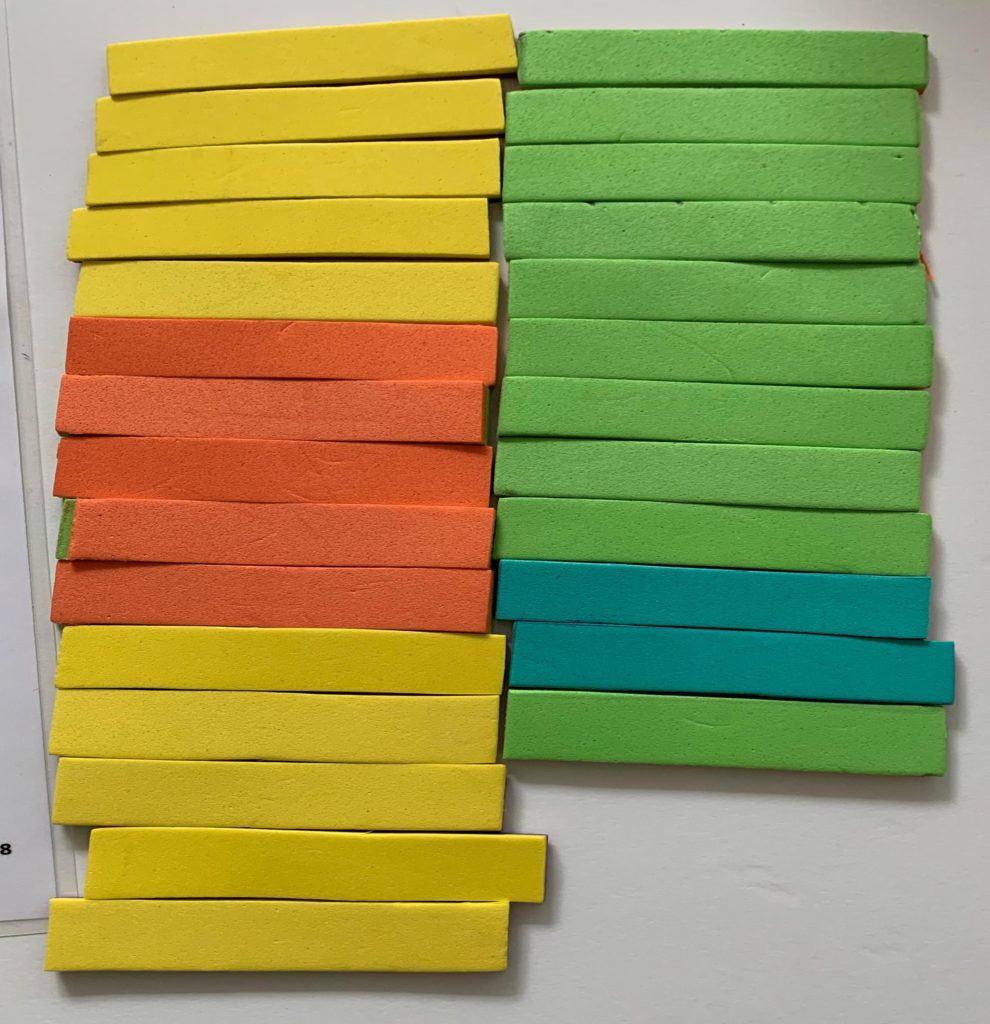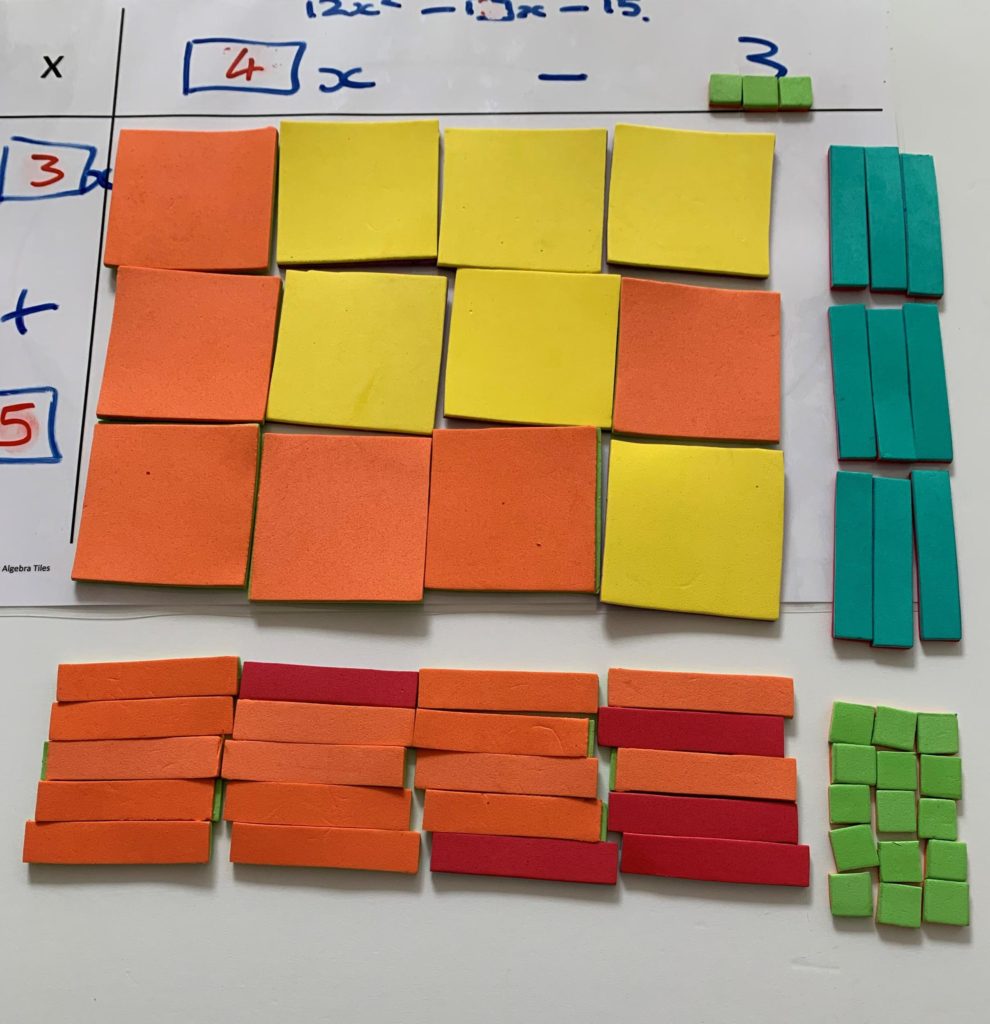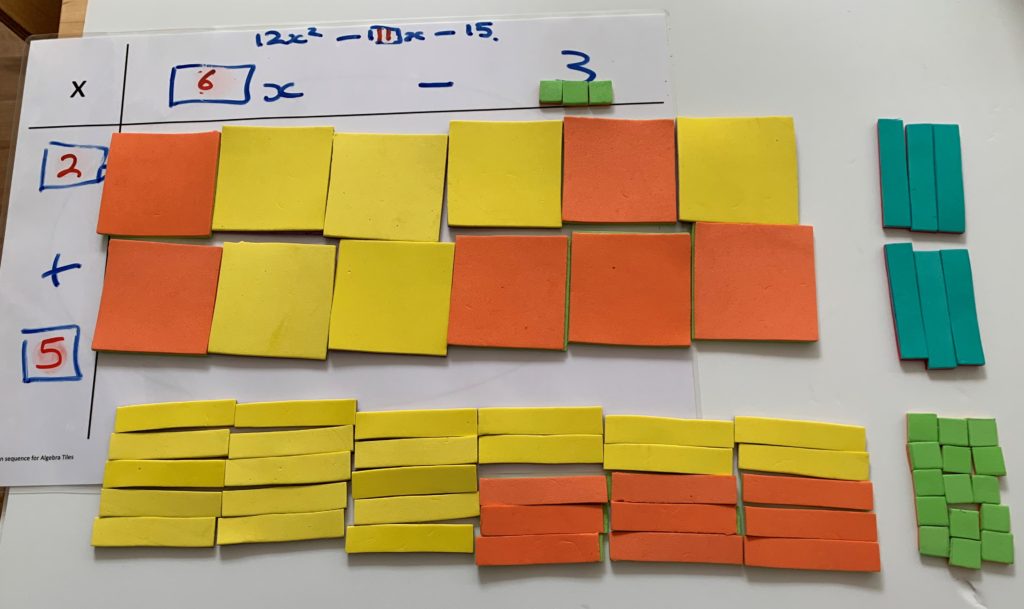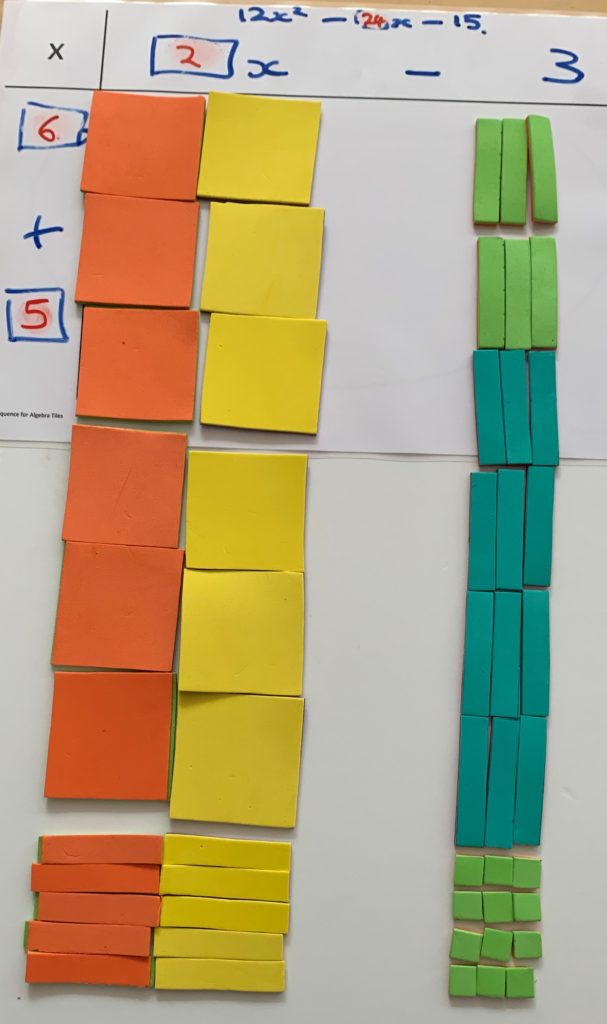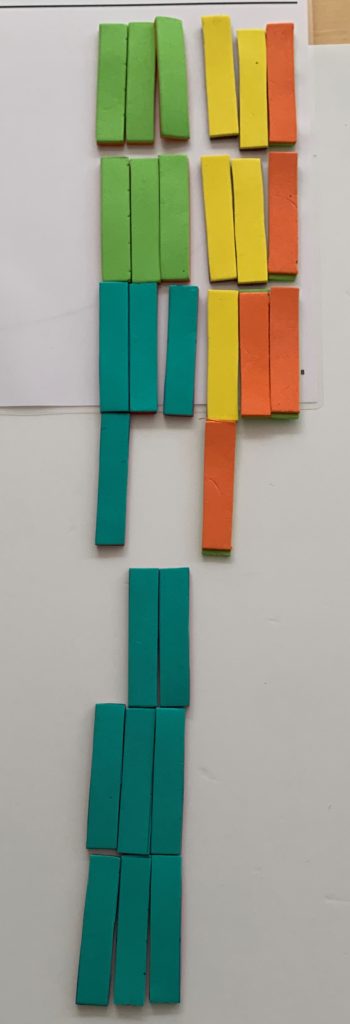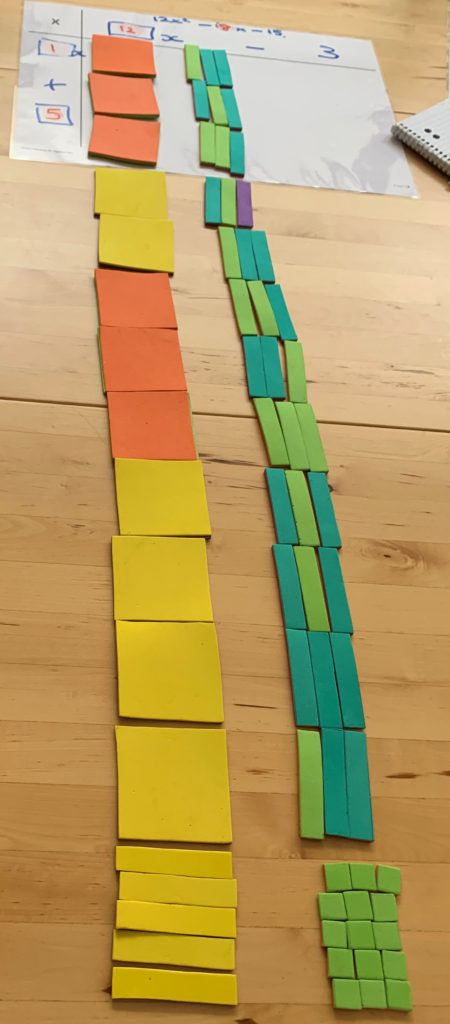In this post, I will look at how to use Algebra Tiles to solve Linear Equations. There are several ways you can draw diagrams to illustrate this process and also different concrete materials you can use. One of the most common will be using a balance to demonstrate that both sides of an equation must remain the same (in balance) as you manipulate the variables and constants. Using Algebra Tiles, and the zero-sum pair concept can help students understand why we ‘add/subtract the same from both sides’.
Numberless Word Problems
Students have to be comfortable with the notion that the variable an unknown amount. In order to help students I would start with Numberless Word problems (see this link and the Padlet for examples). This allows students to think about the problem before you introduce the numbers.
Here is an example:
Start with a very open scenario:
I have two baskets of apples. Each basket has the same number of apples.
Ask the students what they notice and wonder. There is no problem yet, maybe ask the students what they think the problem might be.
Then add a little more detail to the scenario:
In one of the baskets, the apples are loose. In the other basket, some of the apples are in bags.
What has this added to the problem? what questions might the students have now? What might the problem be?
I now add in some numbers to the scenario:
I have two baskets each with 11 apples. In one basket all the apples are loose. In the other basket, some apples are evenly divided into 3 bags and there are 5 loose apples.
Now you can ask the students how they could write this problem down. Maybe ask them to illustrate it using Algebra Tiles. Here are some possible abstract representations:
3 bags of apples + 5 apples = 11 apples
3b + 5 = 11
There is still no question being asked – ask the students what they think the question is. In this case, the question would probably be:
How many apples are in each of the bags?
Once the problem is set up, you can begin to discuss how to solve the problem.
Solving simple linear equations
In the video below, I show how I would solve the above problem using Algebra Tiles. I have used conventional x rather than b.
I really like to annotate what I am doing as I work. Having a surface where students can easily erase errors will encourage them to ‘give it a go’, to try ideas that they are not confident with.
This also allows them to see where the standard algorithms come from. When they put in tiles to make zero-sum pairs and then annotate that the reasoning behind the algorithm for solving equations becomes more apparent.
In this example, I have introduced negative values.
Make sure you mix it up a little by not having the variables always on the same side of the equals sign!
Linear equations with variables on both sides of the equals sign
In the next few examples, I demonstrate how to use Algebra Tiles to solve linear equations with variables on both sides of the equals sign.
Here is the same equation solved in a different way.
By encouraging students to solve in more than one way, they can begin to discover which methods are more efficient. Allow the students time to explain their methods to the class to discuss which method works ‘best’ and why. A gallery walk is a great way to do this.
One more example of solving a linear equation.
In the above example, the variable has been written after the constant term. Although there are mathematical conventions for writing expressions, students need to work with examples written in unconventional ways. Often in tests, these sorts of questions are put into ‘throw’ the students.
In Part 4 of this series, I will explore multiplying linear expressions and factorising quadratic expressions.
Resources
There is a Padlet to accompany this blog series with links to research, virtual manipulatives and other resources.


